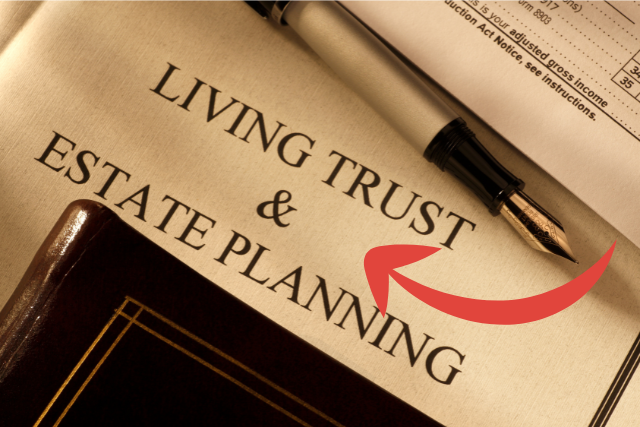10 Tips for Simplifying the Administration of a Deceased Estate

Administering a deceased estate can feel overwhelming, especially if you’re not sure where to start. With so many moving parts to manage, it’s easy to feel daunted.
But don’t worry—breaking the process down into manageable steps can make it much easier.
Whether you’re tackling this yourself or helping a loved one, these tips will help streamline the process and ensure you’re on the right track.
1. Work with Good Legal Experts
Let’s start with the most important piece of advice: bring in experienced legal professionals. Navigating a deceased estate Canberra often involves legal jargon, complex paperwork, and deadlines.
A skilled estate lawyer will guide you through these, ensuring nothing gets missed. They can also help with lodging probate applications, interpreting the will, and dealing with disputes.
While it may be tempting to handle everything alone, having legal support saves time, reduces stress, and helps avoid costly mistakes.
2. Locate the Will (If There Is One)
One of your first tasks is to locate the will. This document outlines how the deceased wanted their assets distributed and may name an executor responsible for overseeing the estate.
If you can’t find the will, check with their lawyer, financial advisor, or even family members. In cases where no will exists, the estate will be distributed according to intestacy laws, which vary by state or territory.
3. Understand Your Role as Executor
If you’re named as the executor, it’s crucial to understand what this entails. As the executor, you’re responsible for collecting assets, paying debts, and distributing what’s left to beneficiaries.
It’s a big job, but knowing your duties upfront will make it far less intimidating. Don’t hesitate to seek advice from professionals along the way—it’s not something you need to face alone.
4. Create an Inventory of Assets and Liabilities
Before you can administer an estate, you’ll need a clear picture of what’s included. Start by creating a list of assets, such as property, bank accounts, investments, and personal belongings.
Then, identify any liabilities, including mortgages, credit card debt, or outstanding bills. This step helps you determine the estate’s total value and ensures all debts can be paid before distributing assets.
5. Apply for Probate (If Needed)
In many cases, you’ll need to apply for probate to legally deal with the estate. Probate is a court process that confirms the will is valid and gives the executor authority to act.
While not always required—smaller estates may be exempt—it’s a critical step for larger or more complex estates. Your lawyer can guide you through the process and ensure all documents are submitted correctly.
6. Notify Relevant Organizations
Once you’ve received probate, it’s time to notify relevant organisations of the death. This includes banks, insurance companies, utility providers, and government agencies such as the Australian Taxation Office (ATO).
Don’t forget to cancel subscriptions, memberships, and any other services the deceased may have had. Many organizations will ask for a copy of the death certificate, so have this ready to send out.
7. Settle Outstanding Debts and Taxes
Before distributing any assets, you’ll need to settle all outstanding debts and taxes. This includes paying off mortgages, credit cards, and personal loans, as well as filing a final tax return for the deceased.
If the estate doesn’t have enough funds to cover its debts, creditors are typically paid in a specific order. Again, this is an area where professional advice is invaluable.
8. Communicate with Beneficiaries
Good communication is key to avoiding misunderstandings or disputes during the administration process. Keep beneficiaries updated on your progress and let them know when they can expect distributions.
Transparency goes a long way in ensuring everyone feels informed and respected. If disputes do arise, try to resolve them amicably—legal battles can be costly and emotionally draining for everyone involved.
9. Distribute Assets According to the Will
Once all debts and taxes are settled, you can distribute the remaining assets to the beneficiaries as outlined in the will. This might include transferring property titles, selling assets to divide the proceeds, or simply handing over personal items.
Be meticulous in your record-keeping during this process—it’s important to have a clear paper trail in case of any future questions or disputes.
10. Close the Estate
The final step is closing the estate. This involves ensuring all tasks are completed, accounts are closed, and any residual funds are distributed.
Once everything is finalized, you can prepare a report summarizing what was done and share it with beneficiaries. This brings closure to the process and ensures everyone is on the same page.
Take the Stress Out of the Process
Administering a deceased estate doesn’t have to be a daunting experience. By following these tips and seeking professional support where needed, you can navigate the process with confidence and clarity.
Remember, you’re not alone—legal experts, financial advisors, and other professionals are there to help every step of the way.
Whether you’re acting as an executor or simply supporting someone who is, taking things one step at a time will make all the difference.






